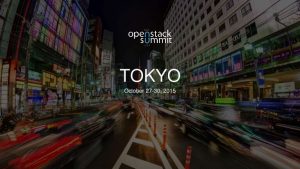Cloud computing may have entered mainstream conversation, but OpenStack cannot claim to be quite so well known. This is despite the fact that the OpenStack project began more than five years ago and is supported by well-known businesses like IBM, Dell, Yahoo and Intel. So what exactly is OpenStack?
[easy-tweet tweet=”Get to know #OpenStack better with @Bsquared90 on @Comparethecloud” via=”no” usehashtags=”no”]

The simplest definition is that OpenStack is an open source cloud operating system. It was founded in July 2010 as a collaboration between Rackspace and NASA with the aim of allowing organisations of any size to develop and offer cloud resources running on standardised hardware. It seeks to shift cloud computing away from proprietary platforms towards a more open, accessible and innovative approach.
In terms of the software itself, the OpenStack project predominantly deals with Infrastructure-as-a-Service, aiming to deliver compute resources, such as virtual machines, network and storage. Prior to OpenStack, if a business wanted to build or deploy an application they usually did so on a dedicated server, which led to a lot of under-utilised servers and a lot of hassle managing and configuring them. Virtualisation improved matters by adding a hypervisor to the servers, but even then, when more and more virtual machines were added, it became increasingly difficult to manage. Hypervisors and servers could come in different brands which made configuration difficult and ultimately businesses began managing servers in much the same way as they would have with physical machines, except there was now an additional virtualisation layer in place.
OpenStack takes all the hypervisors and represents them as pools of resources
OpenStack takes all the hypervisors being used by an organisation and represents them instead as pools of resources. These OpenStack shared services can be split into compute, networking and storage features and crucially are all accessed via the same extraction layer, rather than the underlying hardware or software. This means that you could be running Hyper-V, VMWare or any other kind of hypervisor, but the user experience delivered by OpenStack would be consistent regardless. The OpenStack dashboard also provides administrators and other users with the ability to set up virtual machines, manage networks or make any other configurations they need to.
[easy-tweet tweet=”#OpenStack is #opensource and supported by multiple #cloud vendors” user=”bsquared90″ usehashtags=”no”]
Because OpenStack is open source and supported by multiple cloud vendors, it openly embraces innovation and is already being used to power public and private clouds across a range of industries. OpenStack is currently aiding academic research, healthcare services, finance, retail and the entertainment sector. One of the world’s foremost scientific undertakings, CERN, opted for OpenStack when it decided the time was right to embrace cloud computing. Researchers at the facility needed a platform that would be able to interact with its existing IT solutions and handle the vast quantities of data being recorded by the Large Hadron Collider.
“OpenStack’s technical architecture clearly addressed our needs to run at scale,” explains Tim Bell, manager of infrastructure services at CERN. “Also, the technology and developer ecosystem around OpenStack are very vibrant and would enable us to build the services we needed within the cloud. With an open community, we can benefit from the work of the active contributors but also use our engineering skills to enhance the product for others.”
“OpenStack is a global collaboration of developers and cloud computing technologists”
As referenced by the CERN scientist, any definition of OpenStack must recognise that it is more than just a cloud computing platform: “OpenStack is a global collaboration of developers and cloud computing technologists producing the open standard cloud computing platform for both public and private clouds.” Like other open source projects, OpenStack also refers to the community behind the technology. Made up of more than 30,000 individuals and 555 supporting companies spread across 177 countries, the OpenStack community is growing rapidly. If you have a question about OpenStack, the community will be happy to answer it. If you have some code that you wish to contribute, you are free to do so and if you want to learn more about the software, there are online training programmes available. It is the inclusiveness of OpenStack that will help it to continue fostering innovation and prevent it from stagnating. The software currently has a six month release cycle, but developers can design and code additions whenever they want, because ultimately it is up to the community to decide OpenStack’s future.



